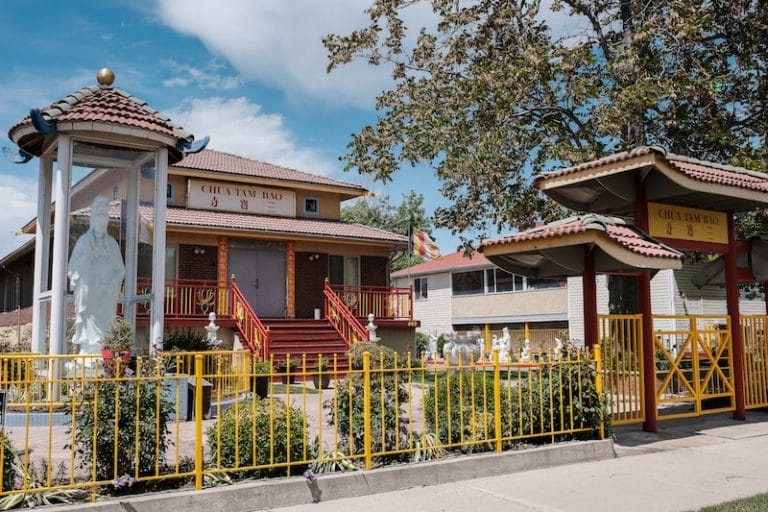
On a day just before 9/11, Mary Ellen Sloan went for what she thought would be a typical walk around her Avenues neighborhood. She knew nothing of the goings-on inside the well-maintained Queen Anne house at the corner of 1300 East and South Temple. Its sign simply read ‘Zen Center.’ She felt compelled to climb the steps and returned the next evening for a class. “I went in and I just felt like I’d come home. I just fell in love with the dharma.” The word dharma refers to the teaching of Buddhism. “It’s changed my life,” she continues. Indeed it has. Today Mary Ellen is a sensei with her own students.
While it’s tempting to assume Utah Buddhism is merely a byproduct of newcomers, that’s not necessarily the case. Utah’s first Buddhists were Japanese immigrants arriving in the 1880s to labor in mines and do rail work. The second wave of Japanese Buddhists were displaced by the 1906 San Francisco earthquake. They came east, their inherited religion in tow, for mining jobs in Wyoming. But the jobs weren’t there, so they settled in the fertile Bear River Valley and established that region’s first Buddhist worship site in Honeyville.
Fast forward to the 1960s and ‘70s. Young westerners studying with Eastern masters became a thing. Some of these young boomers, including Mary Ellen’s teacher, Genpo Roshi, went on to write books, develop courses, lead retreats and create centers. He has trained a total of seven local senseis in his Big Mind Process — an approach which combines aspects of Western psychology and Zen. With eight senseis, “Salt Lake City has been referred to as the epicenter of Zen in the United States,” Mary Ellen says.
Since the 1970s and ‘80s, Utah has seen an influx of ethnic Buddhists, notably Tibetan, Vietnamese, Laotian, and Cambodian refugees, as well as immigrants from Thailand and Korea. For ethnic Buddhists, religious institutions serve as de facto community centers — places where one can relax among others who share the same language and culture, as well as similar views and experiences. Over generations, as ethnic identity diminishes, these groups struggle to maintain their numbers. That’s what happened in Honeyville.
“The immigrant population looks at Buddhism differently.They’re more about devotion, they’re devotees — not so much meditators,” says Donna Dinsdale, a long-time Tibetan Buddhist lay teacher in Salt Lake. Meditation is the primary draw of western newcomers to Buddhism. “It really came into fruition in the late 80s, early ‘90s,” Donna observes.

Along with western versions of Zen and Tibetan Buddhism, Vipassana is another popular meditation-based tradition. “The word Vipassana means seeing things as they really are,” says Mark KcKenzie. “I’ve always had moments where I experienced joy, but I never acknowledged it. Now it’s like I’m experiencing joy and I acknowledge it … I think that’s what’s different,” he elaborates.
Vipassana centers around the country conduct 10-day-long retreats where total silence is observed. Participants are not charged for the experience. Many people carry the practice into their daily lives, and Mark runs a regular hour-and-a-half-long Thursday evening group. They meet at 6:30 at Zion Lutheran Church, 1070 Foothill Drive in Salt Lake City. All are welcome.





